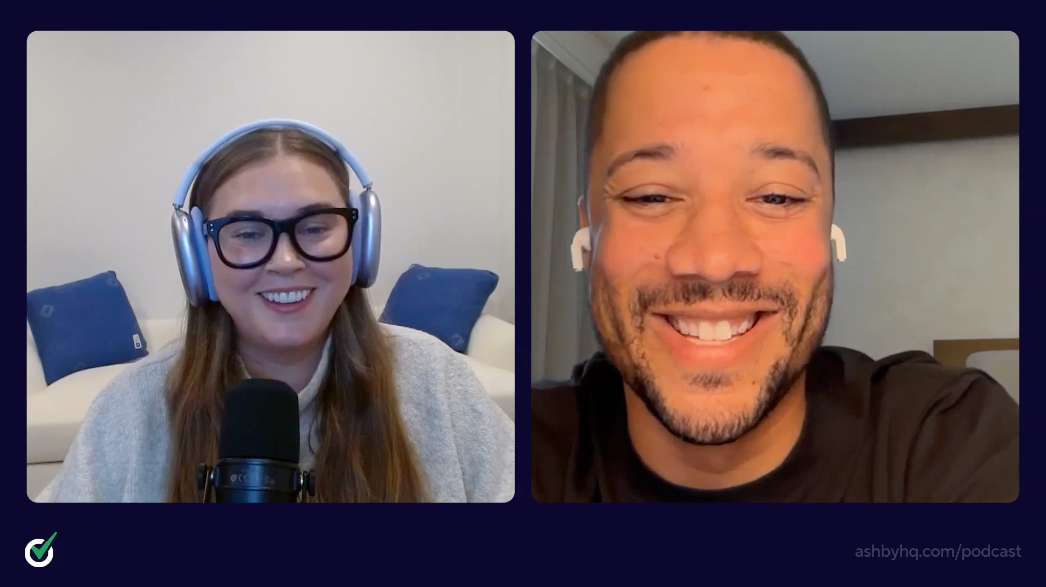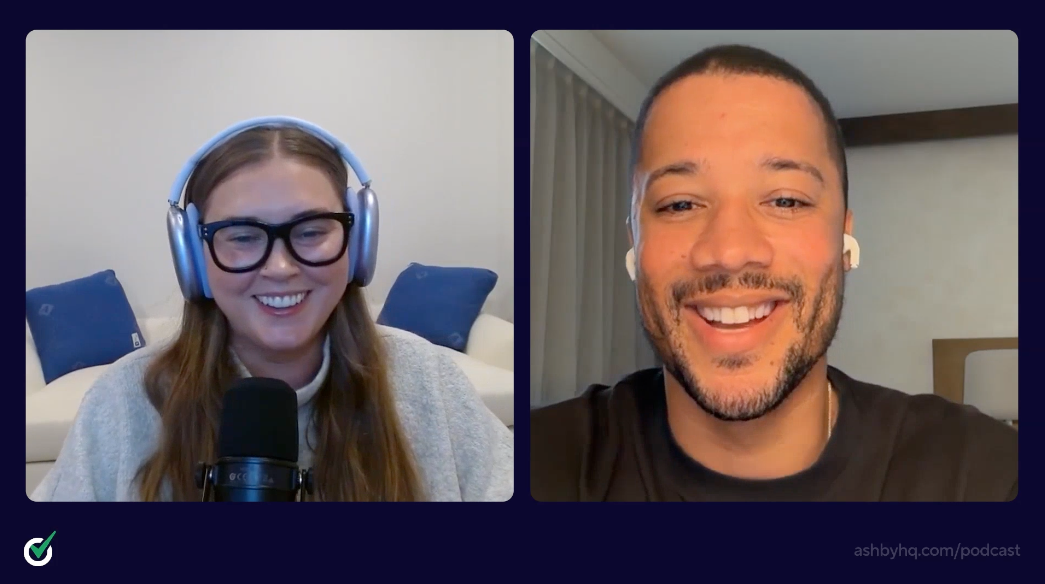Turning Opposition into Buy-In for Early Career Talent
About this Episode
In this episode of Offer Accepted, Corey Twitty, Head of Executive Recruiting at Zillow, reflects on his experience leading talent programs at Netflix, Lyft, Intuit, and Target. At Netflix, Corey built the company’s first emerging talent program, redefining how it attracted and developed future leaders.
He shares how the process required empathy, persistence, and a willingness to challenge long-held beliefs about who succeeds in high-performance environments. Corey walks through the culture shift that came from treating dissent as design input, leading with purpose when there was no playbook, and partnering across functions to tie early-career hiring to real business outcomes.
The result was a program that blended strategy and humanity, helping Netflix develop its next generation of leaders while inspiring a company-wide mindset shift that continues to influence how talent programs are built today.
Topics
This Episode's Guest
Corey Twitty
Director, Executive Search @ Zillow, ex-Netflix
Corey Twitty is Head of Executive Recruiting at Zillow and a former talent leader at Netflix, Lyft, Intuit, and Target. With over 15 years of experience designing and scaling innovative recruiting programs, Corey specializes in building strategies that balance creativity, data, and long-term business impact. His work at Netflix laid the foundation for how the company develops emerging talent and future leaders while strengthening alignment between recruiting and business strategy.
Takeaway 1
Use Dissent as a Design Tool 💬
Corey entered Netflix during a time when the company’s hiring philosophy revolved around experience and autonomy. Introducing early- career hiring meant challenging that identity. Instead of forcing change, he sought to understand it. He treated dissent not as a barrier but as valuable design input, running toward disagreement to find the best solutions.
Why It Matters:
Cultural change sticks when people see themselves in it. As Corey put it, culture change happens when people feel ownership of the new story, not when they’re told to believe it. Inviting critique and surfacing concerns early turns skeptics into collaborators who shape a stronger, more relevant solution.
Quick Tips
- Start by asking “why.” Before building, uncover why current systems work. Corey spent his first weeks learning what made Netflix’s senior model effective so that new ideas could build on, not break, that foundation.
- Bring people together intentionally. Corey convened both advocates and skeptics to exchange perspectives and surface better ideas. He treated every conversation as design input rather than opposition.
- Reflect on dissent openly. Share how feedback is influencing the approach so contributors can see their perspectives shaping the outcome. Transparency builds credibility and turns critics into partners.
Takeaway 2
Lead with Purpose When There’s No Playbook 🧭
Once the program was underway, Corey’s mantra became “strong opinions, loosely held.” He and his team entered every discussion with conviction but stayed open to change. Building Netflix’s first emerging talent program meant stepping into uncharted territory, where proven frameworks didn’t apply and every decision required learning in real time.
Why It Matters:
When you’re creating something that hasn’t existed before, conviction and adaptability have to coexist. A clear “why” keeps teams aligned (even when progress isn’t steady) and gives them confidence to keep testing, learning, and improving.
Quick Tips
- Stay grounded in purpose. The goals at Netflix were never about launching an early career program for vanity; they were about building Netflix’s leadership bench for the future. Keeping that purpose in focus helped Corey navigate resistance and iteration.
- Retire the old playbook. Corey quickly realized the traditional approach to early-career programs wouldn’t fit Netflix’s culture. Building something new required experimentation and a willingness to start from zero.
- Lead with belief before results. Corey reminded his team that growth isn’t always “up and to the right.” Modeling grit and steadiness through iteration helped others stay engaged and focused on the long game.
Takeaway 3
Build with the Business, Not Beside It 🏗️
Corey made it clear that building a sustainable program required partnership beyond talent. He aligned with engineering and operations to solve real business challenges, tying early career hiring to skill gaps, leadership development, and long-term workforce health. Importantly, he built a team of advocates across functions, not just recruiters.
Why It Matters:
Programs succeed when they solve real business problems. By building with the business, not beside it, you create advocates who fund, defend, and scale the work because it delivers outcomes they care about.
Quick Tips
- Translate talent work into business outcomes. Corey tied early career programs to succession planning and innovation goals, showing how new talent could reduce costs and spark new ideas.
- Recruit a cross-functional team. Corey emphasized the importance of surrounding yourself with great people, not just great recruiters. Partner with hiring managers, engineers, and business leaders who can help scale the work.
- Enable the business to help drive the work. Corey encouraged stakeholders to get involved through interviewing, mentorship, and resume reviews. That hands-on partnership helped the program gain momentum and scale.
What Hiring Excellence Means to Corey
For Corey, Hiring Excellence means creating a frictionless experience that balances process with empowerment. He believes in hiring exceptional people, giving them context and trust, and then getting out of their way. Structure should support judgment, not replace it.

Corey's Recruiting Hot Take 🔥
Corey believes recruiting will start to look more like executive and leadership search. As AI drives higher application volumes, recruiters will need to lean on intelligence, market mapping, and succession planning to uncover the right talent.
He predicts that skills once unique to executive search, like relationship building, candidate validation, and long-term nurturing, will become standard across every level of hiring. The future of recruiting will depend on knowing who is real, who is ready, and how to build trust in an increasingly automated world.

Timestamps
(00:00) Introduction
(00:46) Meet Corey Twitty
(02:07) Why early career hiring matters more than ever
(03:18) How early talent supports long-term succession planning
(04:57) Changing Netflix’s culture around early career
(06:39) Gaining buy-in through co-design and debate
(08:49) Tactical steps for launching a program from scratch
(11:35) What strong opinions loosely held look like in action
(13:32) Advocating for resources during hiring freezes
(16:34) Interns vs. new grads: Where to start
(19:48) Tracking results and impact over time
(23:35) Building a 3-part early talent strategy
(26:46) What hiring excellence means to Corey
(27:48) Corey’s recruiting hot take
(30:28) Advice Corey would give his early-career self
(31:44) Where to connect with Corey
Other Episodes
Earning Trust Through Employer Storytelling
In this episode of Offer Accepted, Jeff Moore, VP of Talent Acquisition at Toast, shares how employer storytelling earns candidate trust. He explains how Toast builds authentic candidate experiences, empowers recruiters to own the brand narrative, and invests in local markets to create lasting connections.
Redesigning Hiring Assessments to Improve Selection Accuracy
In this episode of Offer Accepted, Hebba Youssef, Chief People Officer at Workweek and creator of I Hate It Here, shares how realistic, role-relevant hiring projects can lead to more confident and accurate hiring decisions. Shannon and Hebba explore why assessments should test for day-one skills (not teachable ones), how rubrics drive fairness, and why introducing projects early in the process saves time and prevents bias. Whether you're rethinking your assessment strategy or just starting to use projects in your hiring process, this conversation offers tactical guidance and a refreshing dose of clarity.

Join the Hiring Excellence movement
New episodes every month - subscribe here so you never miss out.
